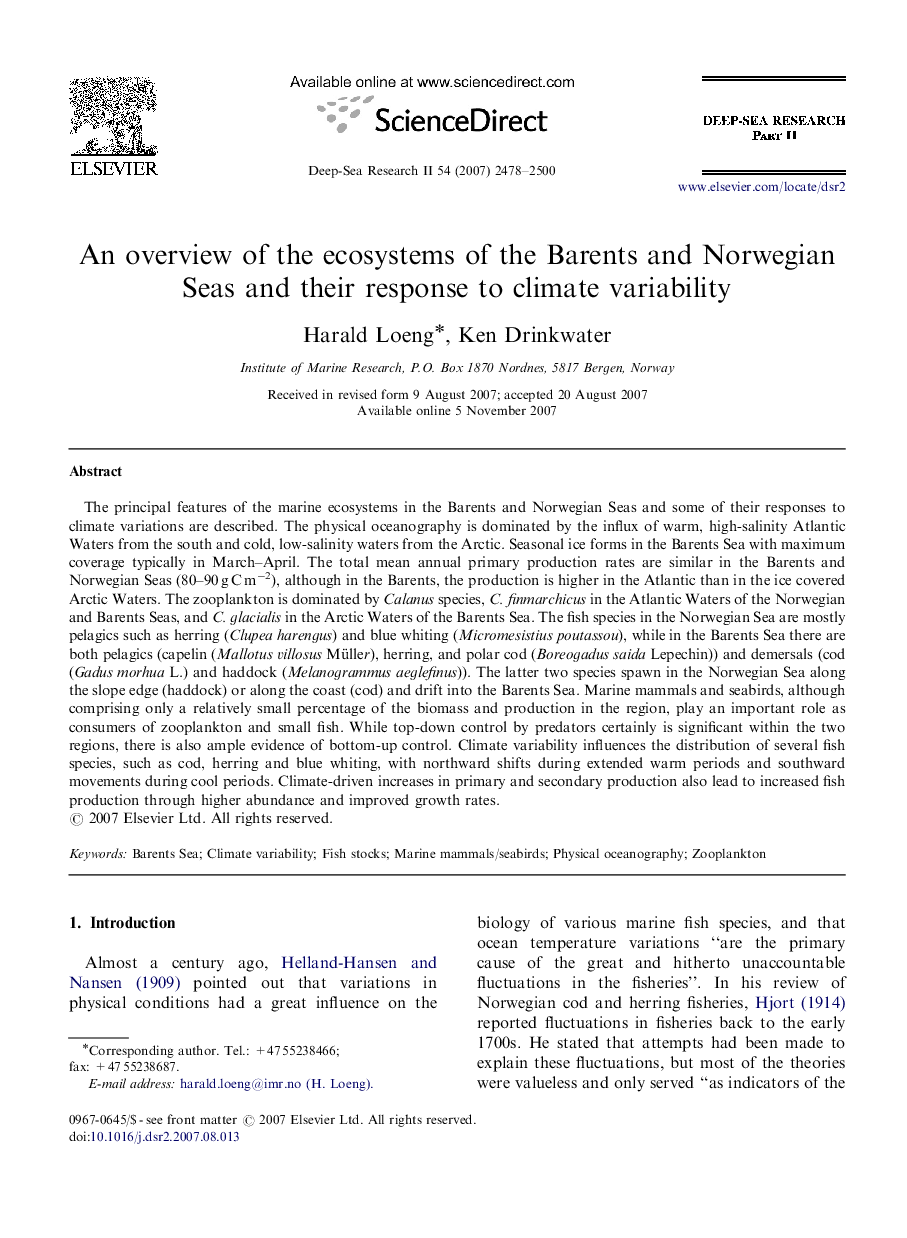| کد مقاله | کد نشریه | سال انتشار | مقاله انگلیسی | نسخه تمام متن |
|---|---|---|---|---|
| 4538169 | 1626500 | 2007 | 23 صفحه PDF | دانلود رایگان |

The principal features of the marine ecosystems in the Barents and Norwegian Seas and some of their responses to climate variations are described. The physical oceanography is dominated by the influx of warm, high-salinity Atlantic Waters from the south and cold, low-salinity waters from the Arctic. Seasonal ice forms in the Barents Sea with maximum coverage typically in March–April. The total mean annual primary production rates are similar in the Barents and Norwegian Seas (80–90 g C m−2), although in the Barents, the production is higher in the Atlantic than in the ice covered Arctic Waters. The zooplankton is dominated by Calanus species, C. finmarchicus in the Atlantic Waters of the Norwegian and Barents Seas, and C. glacialis in the Arctic Waters of the Barents Sea. The fish species in the Norwegian Sea are mostly pelagics such as herring (Clupea harengus) and blue whiting (Micromesistius poutassou), while in the Barents Sea there are both pelagics (capelin (Mallotus villosus Müller), herring, and polar cod (Boreogadus saida Lepechin)) and demersals (cod (Gadus morhua L.) and haddock (Melanogrammus aeglefinus)). The latter two species spawn in the Norwegian Sea along the slope edge (haddock) or along the coast (cod) and drift into the Barents Sea. Marine mammals and seabirds, although comprising only a relatively small percentage of the biomass and production in the region, play an important role as consumers of zooplankton and small fish. While top-down control by predators certainly is significant within the two regions, there is also ample evidence of bottom-up control. Climate variability influences the distribution of several fish species, such as cod, herring and blue whiting, with northward shifts during extended warm periods and southward movements during cool periods. Climate-driven increases in primary and secondary production also lead to increased fish production through higher abundance and improved growth rates.
Journal: Deep Sea Research Part II: Topical Studies in Oceanography - Volume 54, Issues 23–26, November–December 2007, Pages 2478–2500